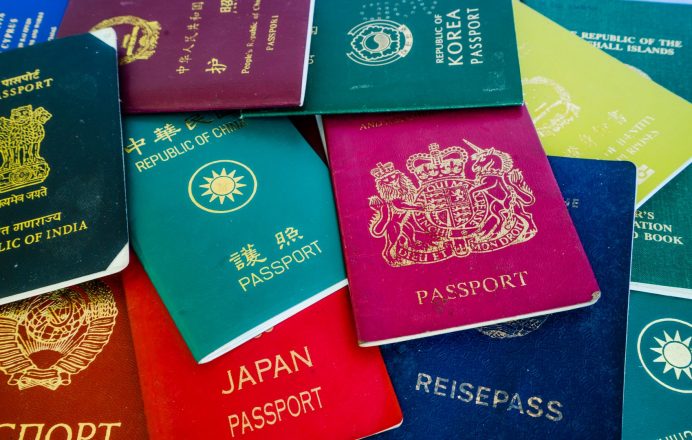Doanh nghiệp đến cư trú
Hai danh mục được sử dụng phổ biến nhất của các đơn xin cư trú liên quan đến kinh doanh là danh mục Di cư có tay nghề cao và Di cư kinh doanh.
(a) Di cư có tay nghề cao được thiết kế để đảm bảo rằng những người di cư đến New Zealand có các kỹ năng mà đất nước cần. Danh mục này hoạt động trên một hệ thống điểm – ứng viên sẽ được mời đăng ký cư trú chỉ khi họ có từ 160 điểm trở lên. Điểm tích lũy được dựa trên bằng cấp, kinh n11ghiệm làm việc, tuổi tác hoặc lời mời làm việc tại New Zealand. Người nộp đơn cũng phải đáp ứng các yêu cầu về sức khỏe và tư cách, thông thạo tiếng Anh và từ 55 tuổi trở xuống. Để thu thập đủ điểm, điều quan trọng là phải có một lời mời làm việc có kỹ năng.
(b) Di dân Doanh nghiệp có một số cách khác nhau mà Người di cư Kinh doanh có thể nộp đơn xin cư trú tại New Zealand. Các cách phổ biến nhất là đăng ký theo danh mục Doanh nhân thường trú hoặc danh mục Nhà đầu tư.
( I) Doanh nhân
Có hai loại thị thực cư trú doanh nhân: hai năm và sáu tháng.
Theo loại thị thực Định cư Doanh nhân (hai năm), người nộp đơn phải thành lập hoặc mua một doanh nghiệp mang lại lợi ích đáng kể cho New Zealand và “tự kinh doanh” trong doanh nghiệp đó trong ít nhất hai năm. Người nộp đơn không cần phải có thị thực Công tác dài hạn hoặc thị thực Làm việc Doanh nhân để đăng ký cư trú theo danh mục phụ này.
Loại thị thực Định cư Doanh nhân (sáu tháng) đã được giới thiệu để cung cấp một con đường nhanh hơn để cư trú cho những người nộp đơn (trong số những thứ khác) tạo ra ít nhất ba công việc toàn thời gian và đầu tư 500.000$NZ vào công việc kinh doanh của họ. Yêu cầu vốn này có thể được miễn trong một số trường hợp. Loại này yêu cầu doanh nghiệp đã hoạt động ít nhất sáu tháng và người nộp đơn đã tự kinh doanh trong doanh nghiệp đó trong sáu tháng và vẫn đang tự kinh doanh trong doanh nghiệp đó. Người nộp đơn cần có thị thực Công tác dài hạn hoặc thị thực Làm việc Doanh nhân để nộp đơn theo danh mục phụ này.
Người nộp đơn xin thị thực Định cư Doanh nhân phải đáp ứng các yêu cầu về sức khỏe, tư cách và có các kỹ năng tiếng Anh bắt buộc.
( II) Nhà đầu tư
Có hai hạng mục phụ thuộc hạng mục đầu tư: Nhà đầu tư 1 và Nhà đầu tư 2.
Trong danh mục nhà đầu tư 1, người nộp đơn phải đầu tư 10 triệu đô NZ vào New Zealand trong thời gian ba năm. Người nộp đơn cũng phải dành 44 ngày trong mỗi hai năm cuối của giai đoạn đầu tư ba năm tại New Zealand, hoặc 88 ngày bất kỳ lúc nào trong thời gian đầu tư ba năm nếu họ đã đầu tư 2,5 triệu đô NZ vào các khoản đầu tư tăng trưởng.
Có các yêu cầu về sức khỏe và tư cách, nhưng không có yêu cầu về độ tuổi, kinh nghiệm kinh doanh hoặc trình độ tiếng Anh.
Trong danh mục Nhà đầu tư 2, người nộp đơn phải đầu tư 3 triệu đô NZ vào New Zealand trong bốn năm. Người nộp đơn phải đáp ứng các yêu cầu về sức khỏe và tư cách, dưới 66 tuổi, có ít nhất ba năm kinh nghiệm kinh doanh được công nhận và có kỹ năng tiếng Anh bắt buộc.
Người nộp đơn cũng phải dành 146 ngày mỗi năm ở New Zealand, hoặc 438 ngày bất cứ lúc nào trong giai đoạn đầu tư bốn năm nếu đã đầu tư ít nhất 750.000 NZ$ vào đầu tư tăng trưởng.
Đối với mỗi danh mục Nhà đầu tư 1 và Nhà đầu tư 2, người nộp đơn có 12 tháng sau khi đơn đăng ký được chấp thuận để chuyển các quỹ đầu tư được chỉ định của họ và đầu tư chúng vào một khoản đầu tư được chấp nhận ở New Zealand, mặc dù khung thời gian này có thể được kéo dài.
Trên đây là một bản tóm tắt chung chỉ của các loại nhập cư hiện tại. Các loại nhập cư có thể và thay đổi. Chúng tôi khuyên rằng bất cứ ai tìm cách sống hoặc làm việc tại New Zealand nên bắt đầu bằng cách đọc các hướng dẫn và mẫu đơn liên quan có sẵn trên trang web của Immigration New Zealand (www.immigration.govt.nz), và nên tìm lời khuyên của chuyên gia trước khi bắt tay vào quá trình nộp đơn.

















































